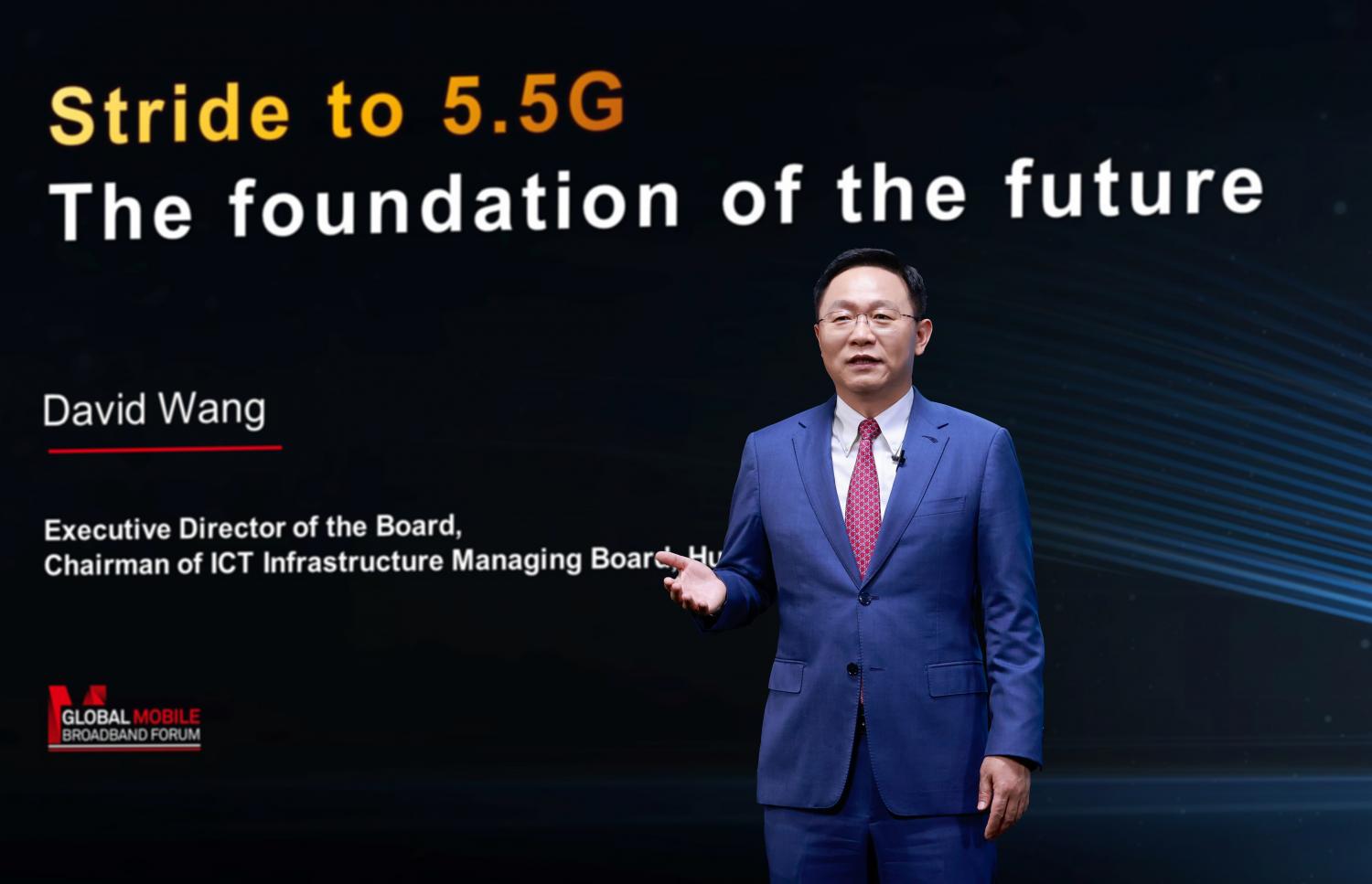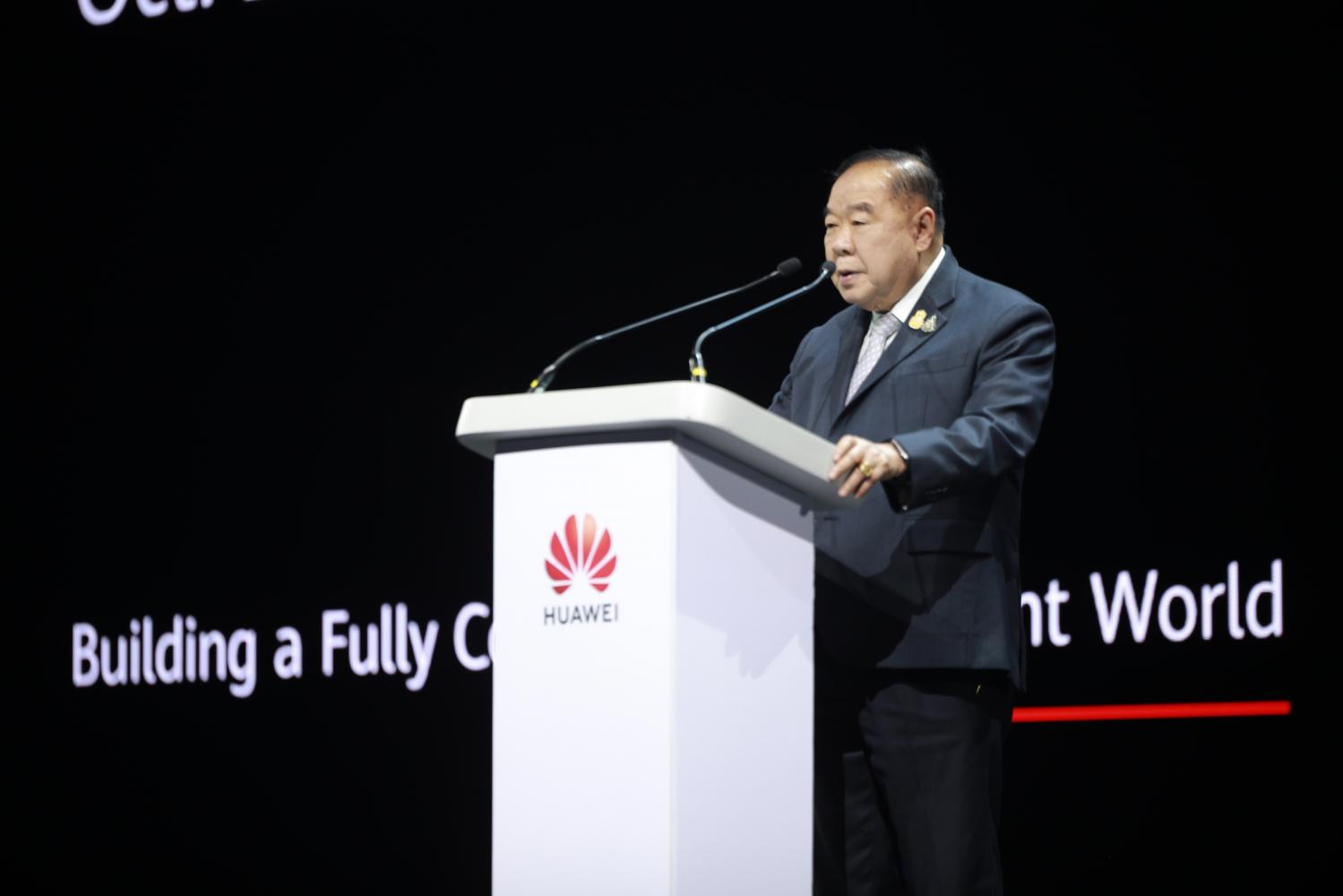All industry players should be prepared to get on board with the 5.5G era to drive growth in the intelligent world as the ultra-fast internet network is able to spur mobile broadband experience and support hundreds of billions of connections, says global tech powerhouse Huawei Technologies.
David Wang, Huawei's executive director of the board and chairman of the ICT infrastructure managing board, said the 5.5G intelligent world will help people achieve native intelligence.
The coming 5.5G era will better meet all the scenarios in terms of digital requirements or the diverse demands of people, things and industries, he said, noting 5.5G will deliver a speed of at least 10 gigabits per second.
To reach this milestone, all industry players need to prepare on all fronts so they can move towards the 5.5G era and eventually build a better intelligent world together, he said.
He delivered the remarks yesterday in a keynote speech entitled "Stride to 5.5G: the Foundation of the Future" on the second day of Huawei's 13th Global Mobile Broadband Forum, which was held at the Queen Sirikit National Convention Center.
"After two years of concerted efforts across the industry, significant progress has been made and we are ready to make the leap to 5.5G," said Mr Wang.
Three development features have been seen in the face of 5.5G, he noted.
First, the standardisation of 5.5G has been initiated and is on track. Second, the industry has made breakthroughs in key technologies for 5.5G while ultra-large bandwidth and enhanced licensed assisted access (ELAA) is now able to deliver 10 Gbps.
Third, the industry has a clear vision for the Internet of Things (IoT) landscape.
Three types of 5.5G-enabled IoT technologies supported by 5.5G, namely narrowband IoT or NB-IoT, RedCap or reduced capability and passive IoT, are developing rapidly and will support numerous IoT connections, he said.
"5.5G has been kicked into high gear. Together, let's stride to 5.5G and build a better, intelligent world," said Mr Wang.

Mr Wang pointed out that the 5.5G intelligent world would help people achieve native intelligence.
5.5G JOURNEY
According to Mr Wang, there are five new areas to address in the face of 5.5G development.
First, it is important to set standards and promote key technological research. Standards steer the mobile communications industry and will guide the 5.5G industry forward along a clearly defined path, he said.
"We should come together to explore what capabilities 5.5G will require in order to support new services and scenarios as we continue to refine 5.5G standards. This will both maximise the potential of 5.5G and extend its lifecycle," said Mr Wang.
Second, it is vital to prepare more spectrum for ultra-large bandwidth.
The industry should fully utilise sub-100 GHz resources to build ultra-large bandwidth. Millimetre wave (mmWave) is a key frequency band for 5.5G. Operators will need to acquire over 800 megahertz of spectrum from this band if they are to realise 10 Gbps experiences.
Third, it is important to prepare for 5.5G with mature networks, devices and chips. Both networks and devices need to be upgraded to deliver 10 Gbps experiences, Mr Wang said.
More innovation would be needed with regard to 5.5G chips and devices to make them more intelligent, or even have more channels, and have the ability to aggregate more than four carriers, he said.
Fourth, all industry players need to work together to build a thriving 5.5G ecosystem and, fifth, they need to continue to develop groundbreaking applications.
"As our standards, spectrum, products and ecosystem mature, 5.5G will become a reality, allowing even more applications to emerge," he said.
INTELLIGENT WORLD
According to Mr Wang, the intelligent world creates infinite possibilities for the future, brings profound changes to people, things and industries, and poses higher requirements for digital infrastructure.
For individuals, as immersive services such as extended reality (XR) and holographic mature, the 10 Gbps connection experience is required.
For industries, digital technologies will reshape the full-scenario production mode. Thousands of industries will accelerate digital intelligent transformation, requiring capabilities such as uplink Gbps, low latency and high reliability.
For IoT, intelligent connection will penetrate into various connected objects, such as wearable devices, smart cars and robots. Differentiated capabilities are required to bear hundreds of billions of IoT connections.
"5.5G brings 10-fold network capabilities, the only way to the intelligent world," Mr Wang said.
"In the near future, 5.5G will upgrade network capabilities by 10 times, and achieve 10 gigabit experience, 100 billion connections and built-in intelligence to meet diverse service requirements. This is the only way to move towards an intelligent world," Mr Wang said.

Deputy Prime Minister General Prawit gave a speech during the opening ceremony of the 13th Global Mobile Broadband Forum.
DIGITAL INFRASTRUCTURE
Deputy Prime Minister Prawit Wongsuwon yesterday presided over the official launch of the Thailand Digital Development Whitepaper at the forum and delivered a speech entitled "Driving towards Thailand 4.0".
He said throughout the past year, the government has been focusing on the development of digital infrastructure that is fundamental for the country's development towards a digital economy.
"Technological changes play a pivotal role in the rapid digital development of Thailand," said Gen Prawit.
The government has implemented digital infrastructure development policies to drive Thailand 4.0, mainly in two parts.
The first is to promote and invest in the digital infrastructure.
The telecommunication infrastructure is an important strategic mechanism to drive the country's development strategy towards fertile environments for businesses to thrive, Gen Prawit said.
It helps accelerate industrial and service development and connected ecosystem development for every industry.
In addition, it will create readiness for people to use the government's digital technology, especially 5G technology infrastructure development, cloud, big data and artificial intelligence to drive development and create opportunities in various dimensions.
Second, the government has been nurturing a digital workforce.
"Digital literacy creates new businesses and new jobs, resulting in new skills being needed. Therefore, we need to equip the workforce with digital skills to support growing demand in the future," he said.

